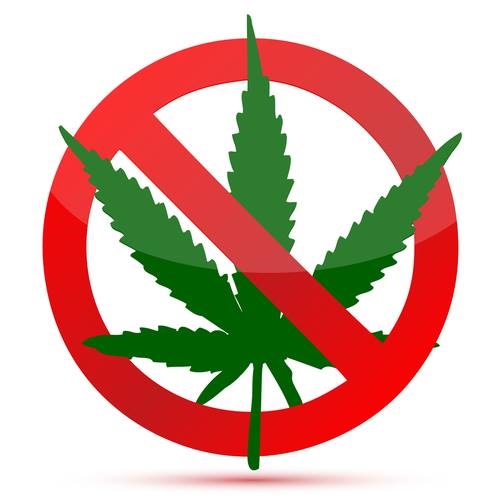The stigma once attached to marijuana has vanished. Nineteen states have legalized cannabis for recreational use, and politicians of both parties increasingly treat it as harmless. Asked during the 2020 presidential campaign about her pot use in college, Kamala Harris giggled and said marijuana “gives a lot of people joy” and “we need more joy in the world.” But the public needs an honest discussion of its social and public-health risks, which include violence and mental illness.
Alex Berenson, author of “Tell Your Children: The Truth About Marijuana, Mental Illness and Violence,” pointed out that the New York Times had curiously removed from an article about the Uvalde school shooting a former co-worker’s recollection that he complained about his grandmother not letting him smoke weed. The Times didn’t append a correction to the story as it might be expected to do when fixing a factual inaccuracy.
Assuming the elided detail was accurate, it would fit a pattern. Mass shooters at Rep. Gibby Giffords’s constituent meeting in Tucson, Ariz. (2011), a movie theater in Aurora, Colo. (2012), the Pulse nightclub in Orlando, Fla. (2016), the First Baptist church in Sutherland Springs, Texas (2017), and Marjory Stoneman Douglas High School in Parkland, Fla. (2018), were reported to be marijuana users. It could be a coincidence, but increasing evidence suggests a connection.
Isn’t pot supposed to make you mellow? Maybe if you smoke only a joint on occasion. But youth nowadays are consuming marijuana more frequently and in higher doses than their elders did when they were young. This is leading to increased addiction and antisocial behavior.
THC, the chemical that causes a euphoric high, interacts with the brain’s neuron receptors involved with pleasure. Marijuana nowadays on average is about four times as potent as in 1995. But dabs—portions of concentrated cannabis—can include 20 times as much THC as joints did in the 1960s. It’s much easier for young people to get hooked. One in 6 people who start using pot while under 18 will develop an addiction, which doctors call “cannabis use disorder.” As they use the drug more frequently to satisfy cravings, they develop psychological and social problems.
That’s what happened to Colorado teenager Johnny Stack. His mother, Laura, wrote a harrowing book chronicling his descent into cannabis addiction. He started smoking weed at 14, after Colorado legalized it, and progressed to using more-potent products such as dabs. He gradually withdrew from social activities and developed psychosis. Substance-abuse treatment and a stay at a mental hospital failed to cure him because chronic marijuana use permanently rewired his brain. Delusional, he jumped off a six-story building and killed himself. Alas, he’s not an anomaly. “People who have taken large doses of the drug may experience an acute psychosis, which includes hallucinations, delusions, and a loss of the sense of personal identity,” the National Institutes of Health notes.
Roneet Lev, an addiction specialist who previously led the Emergency Department at Scripps Mercy Hospital in San Diego, said in a recent interview with the American Council on Science and Health that California cannabis emergency-room visits climbed 53% in the three years after the state legalized recreational marijuana in 2016. Daily marijuana emergency-room visits in San Diego nearly quadrupled between 2014 and 2019.
Cannabis-induced psychosis, she said, is fairly common. Some patients she treated experienced cannabinoid hyperemesis syndrome from long-term use, which causes “scromiting”—screaming and vomiting. There’s no antidote. Some patients spend weeks in the emergency room waiting for placement in mental-health clinics.
Countless studies have also linked chronic cannabis use to schizophrenia. A meta-analysis in January examining 591 studies concluded that early marijuana use among adolescents was associated with a significant increase in the risk of developing schizophrenia. Researchers have yet to prove a causal relationship, but the weight of evidence is hard to dismiss.
Some legalization proponents claim that other countries where marijuana is widely available have fewer mental-health problems than the U.S. But a study from Denmark last summer found that schizophrenia cases associated with pot addiction have increased three- to fourfold over the past 20 years as marijuana potency rose 200%.
Young people are especially vulnerable to cannabis’s effects because their brains are still developing. Scientists in a recent studyreviewed scans of teenagers’ brains before and after they started using pot. They found that parts of the brain involved in decision making and morality judgments were altered in pot users compared to nonusers.
But can pot make people violent? A study last year found that young people with such mood disorders as depression who were also addicted to pot were 3.2 times as likely to commit self-harm and die of homicide—often after initiating violence—than those who weren’t. A meta-analysis found the risk of perpetrating violence was more than twice as high for young adults who used marijuana. It’s possible that pot can trigger dangerous behavior in youths who may be predisposed to it for other reasons such as prenatal exposure to drugs.
Also worrisome, legalization seems to be leading to more pregnant women using pot. About 20% of pregnant young women in California tested positive for marijuana in 2016. THC crosses the placenta and can impair neurological development. Prenatal exposure to marijuana has been linked to behavioral problems, mental illness and lower academic achievement in children and adolescents.
Maybe it’s time that lawmakers and voters rethink their pot-legalization experiment before more young lives are damaged.
Ms. Finley is a member of the Journal’s editorial board.

